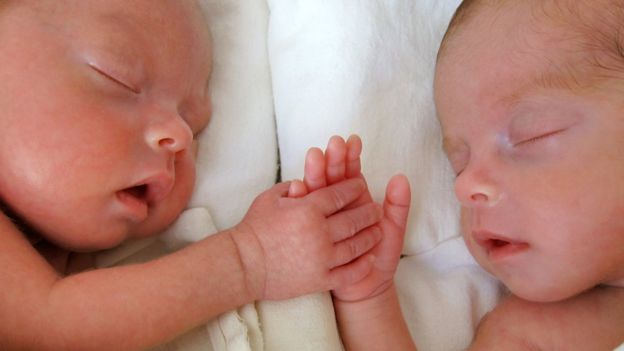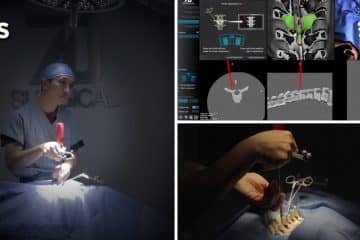Doctors have documented what they say is only the world’s second known case of “semi-identical” twins.
The boy and the girl, now four, from Brisbane, in Australia, are identical on their mother’s side.
But they share only a proportion of their father’s DNA – placing them, genetically, somewhere between fraternal and identical twins.
Experts say the phenomenon is extremely rare – embryos such as these often do not survive.
Prof Nicholas Fisk, who led the team that cared for the mother and twins at the Royal Brisbane and Women’s Hospital in 2014, said the discovery was made through a routine pregnancy scan.
It is the first time semi-identical twins have been identified during pregnancy.
The first-time mother was 28 at the time and had conceived naturally, doctors said.
The case is being reported on in The New England Journal of Medicine.
“The mother’s ultrasound at six weeks showed a single placenta and positioning of amniotic sacs that indicated she was expecting identical twins,” Prof Fisk said.
“However, an ultrasound at 14 weeks showed the twins were male and female, which is not possible for identical twins.”
How did it happen?
Identical, or monozygotic, twins occur when a single egg, fertilised by a single sperm, divides and makes two babies.
These twins will be the same sex and share the same genes and physical features.
Non-identical, or dizygotic, twins occur when two separate eggs are fertilised, each by a different sperm, and develop in the womb at the same time.
These twins can be the same or different sexes and are no more alike than any brother or sister, despite being born together.
In this case of semi-identical, or sesquizygotic, twins, the egg is thought to have been fertilised simultaneously by two sperm before it divided.
If one egg is fertilised by two sperm, it results in three sets of chromosomes, rather than the standard two – one from the mother and two from the father.
And, according to researchers, three sets of chromosomes are “typically incompatible with life and embryos do not usually survive”.
The identity of the twins has not been revealed.
Read: Types of Surgery
What causes twins?

Non-identical twins are more common in some families. Older mothers are also more likely to have non-identical twins because they are more likely to release more than one egg during ovulation.
Identical twins do not run in families.
Infertility treatment – IVF – can increase the chance of twins, as more than one embryo may be put into the womb.
According to the Twins and Multiple Births Association (Tamba), about 12,000 twin births occur each year in the UK.
‘Exceptional case’
The first documented case of half-identical twins was in the US in 2007.
Prof Fisk said an analysis of worldwide twin databases highlighted just how rare sesquizygotic twins were.
He and his colleagues examined genetic data from 968 fraternal twins, as well as a number of large global studies, but found no other case of sesquizygotic twins.
“We know this is an exceptional case of semi-identical twins,” Prof Fisk added.
“While doctors may keep this in mind in apparently identical twins, its rarity means there is no case for routine genetic testing.”


